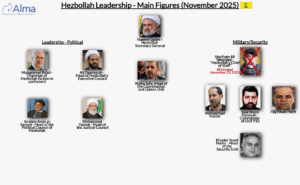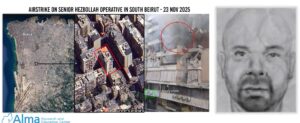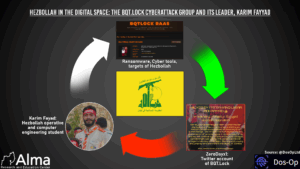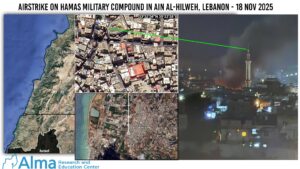According to various reports, Haytham Ali Tabataba’i was attacked a short time ago in Beirut. Based on the information in our possession, he replaced Ali Karaki (who was eliminated in September 2024) as commander of the Southern Front and was appointed as Hezbollah’s acting Chief of Staff.
Haytham Ali Tabataba’i, better known as “Abu Ali Tabataba’i” was born in 1968. Tabataba’i is part of Hezbollah’s founding generation, possessing extensive military knowledge and experience gained in Lebanon, Syria, and Yemen. He commanded the Radwan Unit, appears on the U.S. wanted list, and has even survived several elimination attempts. Tabataba’i is the son of a South Lebanese mother and an Iranian father. He was born in Beirut and raised in southern Lebanon.
Tabataba’i joined Hezbollah at a young age. After the elimination of Imad Mughniyeh (February 2008) and the merger of the rapid intervention unit with the unified Radwan Unit (named after Mughniyeh), Tabataba’i was transferred from commanding the intervention unit to the more junior position of platoon commander within the Radwan Unit, though he still retained the aura of a senior figure in the unit.
During the Syrian civil war, when Hezbollah was invited to join Assad’s forces in fighting against ISIS, Jabhat al-Nusra, and other rebel groups, it is possible that Tabataba’i was granted new and exceptional authority in Syria. As part of this authority, he may have been given responsibility for assisting in the construction of Hezbollah’s military infrastructure in the Golan Heights near the border with Israel (later known as the “Golan File,” which Ali Musa Daqduq was eventually known to have taken command of).
In January 2015, Tabataba’i survived an Israeli strike in the Quneitra province in southern Syria, near the village of Hader. Tabataba’i was the primary target of the elimination attempt and was unharmed. The strike eliminated a senior Iranian IRGC officer and Jihad Mughniyeh, one of the early commanders of the Golan File in its initial stages; Jihad was the son of Imad Mughniyeh.
In 2016, Tabataba’i was on a military “mission” with the Houthis in Yemen. He may have been sent there for professional reasons, or possibly because he survived the elimination attempt carried out in January 2015 and Hezbollah wanted to distance him from the arena so he could “cool down.” Tabataba’i was involved in the professional training of Houthi militia operatives and worked in coordination with the Iranian Quds Force on this matter.
In August 2016, the international hacker group “Anonymous” published information about Tabataba’i, including a composite sketch of him, it called on Hezbollah to stop its activity in Yemen, and even called to harm him.
In 2016, he was added to the OFAC Specially Designated Global Terrorist List, and in 2018 the Americans offered a $5 million reward for anyone who could provide information about him.
In January 2022, reports were published (which later proved false) claiming that Tabataba’i had been eliminated in an Arab coalition strike in Sanaa.
To our understanding, after his deployment in Yemen, Tabataba’i returned to Lebanon and was designated “responsible for the invasion of the Galilee” (as of 2019–2020), which means: commander of the Radwan Unit.
On May 21, 2023, Hezbollah held a large military parade in southern Lebanon. During the main ceremony, Hashem Safi al-Din (former head of the Executive Council and Nasrallah’s successor, who was also eliminated in October 2024) presented the “rifle of Imad Mughniyeh” (a symbolic Kalashnikov rifle) to an unknown individual.

From a comparison we conducted at the time between the face of the man in the ceremony and the face of Tabataba’i in the composite sketch published by the Americans in 2016 (to which we added a beret for the purpose of comparison), it was difficult to ignore the strong resemblance between them. We assessed then that it was possible the man was Tabataba’i (who may have been the Radwan commander at the time), and we even published this assessment on June 2, 2023.
After the outbreak of the war, during 2024, we began identifying the individual who received the rifle from Safi al-Din—whom we had initially identified as Tabataba’i—in additional instances. We recognized him at several funerals of senior Hezbollah operatives. However, his behavior during these funerals led us to strongly doubt that he was indeed Tabataba’i: in every funeral where we identified him, he appeared to function as the person responsible for organizing the ceremony and overseeing its ongoing conduct (a sort of ceremony director). In light of this, we questioned whether Tabataba’i himself would perform such a role.
We assess that if his alimination was indeed successful, Tabataba’i’s photograph will be published sooner or later, allowing us to see how closely it resembles the composite sketch released from 2016.






